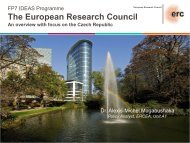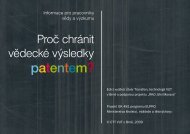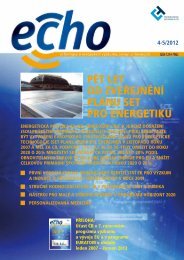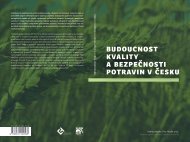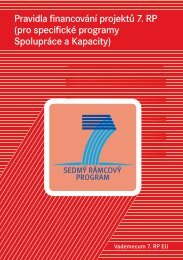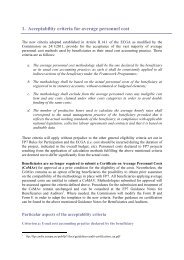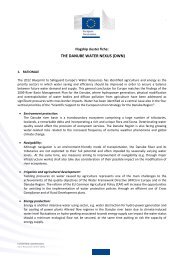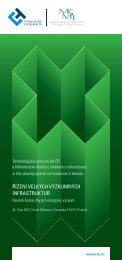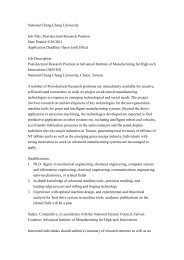Guide to Research and Innovation Strategies for Smart Specialisation
Guide to Research and Innovation Strategies for Smart Specialisation
Guide to Research and Innovation Strategies for Smart Specialisation
You also want an ePaper? Increase the reach of your titles
YUMPU automatically turns print PDFs into web optimized ePapers that Google loves.
ANNEX II: DELIVERY INSTRUMENTS AND HORIZONTAL<br />
APPROACHES<br />
As developed in the previous sections of this guide, the RIS3 concept relies on policy <strong>and</strong><br />
economic rationale. . The implementation of the concept requires a set of delivery instruments<br />
(described in step 5) <strong>and</strong> horizontal approaches. These are introduced here based on a<br />
typology which tries <strong>to</strong> group typical projects that are financed or are <strong>to</strong> be financed by the<br />
ERDF <strong>and</strong> other Structural Funds. These cover a wide range of fields of action, such as:<br />
• Clusters<br />
• <strong>Innovation</strong> friendly business environments <strong>for</strong> SMEs<br />
• <strong>Research</strong> infrastructures, centers of competence <strong>and</strong> science parks<br />
• Universities-enterprise cooperation<br />
• Digital agenda<br />
• Key enabling technologies<br />
• Cultural <strong>and</strong> creative industries<br />
• Internationalisation<br />
• Financial engineering instruments<br />
• Innovative public procurement<br />
• Green growth<br />
• Social innovation<br />
This is not new <strong>to</strong> EU policies. Indeed, <strong>for</strong> many years different the European Commission<br />
has developed schemes, regulations, analyses <strong>and</strong> funded initiatives in all of the <strong>to</strong>pics listed<br />
here above.<br />
In order <strong>to</strong> help regional stakeholders <strong>to</strong> capture the critical lessons <strong>and</strong> knowledge about<br />
those delivery instruments, a summary of EU staff experience in managing them has been<br />
gathered hereafter in a st<strong>and</strong>ardized <strong>for</strong>m, i.e. why the instrument is perceived as important<br />
<strong>for</strong> economic growth, what are the challenges <strong>and</strong> barriers, how the next programming period<br />
will still support them <strong>and</strong> where <strong>to</strong> get more detailed in<strong>for</strong>mation about each of them.<br />
The following sheets are <strong>to</strong> be considered as the 'branches' of the smart specialization 'tree',<br />
whose 'trunk' is represented by this guide. The 'trunk' feeds <strong>and</strong> nurtures the 'branches' but<br />
these latter <strong>for</strong>m self-st<strong>and</strong>ing elements of the whole policy array of <strong>to</strong>ols made available <strong>to</strong><br />
policy-makers, who can ultimately combine them following their strategic vision <strong>and</strong> building<br />
up their own policy mix responding <strong>to</strong> their needs <strong>and</strong> expectations. The roots are the several<br />
economic schools that provide the economic <strong>and</strong> policy rationale <strong>to</strong> this concept.<br />
These branches are <strong>to</strong> be supported by a 'family' of guides on each <strong>to</strong>pic that are available or<br />
being developed <strong>and</strong> are enumerated in each sheet.<br />
Figure 7 gives a synthetic overview of the interactions between the 'trunk' <strong>and</strong> the 'branches'<br />
across smart specialization related policy, conceptual <strong>and</strong> methodological issues, as presented<br />
in the introduction.<br />
65



